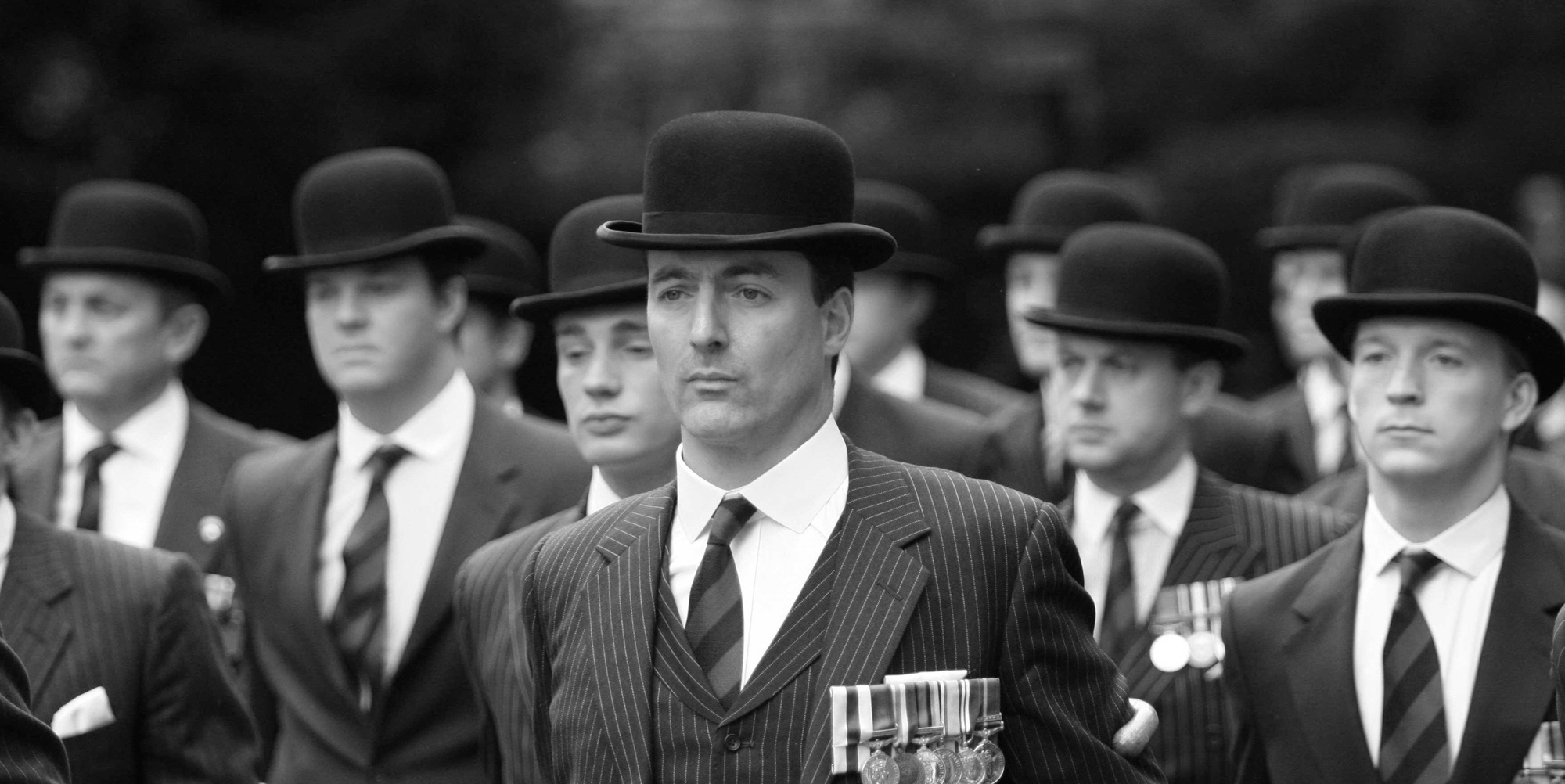The requirements of the “black tie” dress code and how to interpret them in the 21st century – we tell and show on the example of a tuxedo that we sewed for Andrey Merzlikin for the closing ceremony of the 30th Kinotavr in Sochi.
Solemn men’s clothing today is not as strict and scrupulous in respect of the rules as before. Today, experimentation, extravagance, and self-expression are acceptable, even when required to comply with a formal dress code.
However, in men’s fashion there is still the concept of a formal suit, and formats are distinguished here:
- “black tie” (black tie and tuxedo)
- “white tie” (white tie and tailcoat)
Which one to choose for the solemn event will be indicated in the official invitation.
Cases when a complete evening dress is required, that is, a tailcoat and a white tie (or rather a bow tie), are extremely rare in the modern world.
As a rule, a man is faced with the wording “black tie”, which means that the correct form of an evening suit would be a tuxedo in combination with a black bow tie. A tuxedo is an evening suit, that is, a jacket and trousers.

Color
In the classic reading, the color of the dress tuxedo and trousers should be black or deep dark blue. But today, a tailor can offer you both rich burgundy and cold gray with a metallic sheen for sewing a jacket – such options retain a solemn mood, but add variety and allow a man to stand out.
Combinations of tuxedo models and collar types can be different, here are just a few options:
- single-breasted toxido with a shawl collar trimmed with silk;
- single-breasted tuxedo with satin-trimmed peak lapels;
- double-breasted toxido with silk-trimmed peak lapels.
There can also be variations with different types of fasteners for a single-breasted tuxedo: one buttonhole or a fastener with a chain with two loops on the shelves.
If according to the classics, then the trousers should be in tone with a tuxedo with a shiny silk strip (it is called galloon). And no openings. It is better not to experiment here. Even if you choose a jacket in non-classic shades, let the trousers remain traditionally dark. Whether to decorate the side seams with galloon is up to you.
For the “black tie” you will need a white shirt with French cuffs for cufflinks. If you want, the shirt can be decorated with a shirt front. The collar is allowed both under a bow tie and classic. In terms of fit, tuxedo sleeves should be slightly shorter than shirt sleeves so that the cuffs stick out an inch or two. Here the competence of the tailor is very important, which will control the competent length of the sleeves of the shirt, taking into account the model for cufflinks.
The color spot is a small but very effective touch. This is the “icing on the cake” that makes the dress look complete and verified to the smallest detail. Don’t neglect the pocket square! White linen or silk red, french polka dot pattern or plain in the color of your companion’s dress – the choice is yours, gentlemen!
Strict conservatives consider only patent leather pumps with silk bows to be the “correct” shoes for the “black tie” ceremony. It is clear that today it may look ridiculous in the eyes of the majority … Therefore, classic lace-up shoes – black “Oxfords” made of patent or polished leather – this is perhaps the most successful choice of a modern man.
Social events

In the end, Black Tie practically replaced the White Tie from the events where it was customary to wear it before, such as theaters and operas. According to the rules of etiquette, a gentleman should wear a tailcoat only in case of certain royal ceremonies, balls, evening wedding celebrations, and also if such a dress code as White Tie is indicated on the invitation. Black Tie, on the other hand, remains quite popular at both formal banquets and corporate dinners.
However, there are a few other balls, especially in Europe, whose dress code requires the wear of a White Tie. These include a number of British examples, as well as the world-famous Vienna Opera Ball, which is open to the public, or at least those who can afford the ticket price.
Youth ceremonies
One type of formal dance that involves a gentleman’s White Tie is his appearance at the debutante ball, the formal introduction of young ladies aged 17 or 18 in wealthy society. This tradition goes back centuries, including the practice of accompanying the debutante by the father, who is dressed in a tailcoat with a white bow tie, while the other guests (male) are dressed in a tuxedo with a black bow tie.
The middle-class versions of debutant balls and proms and their international equivalents tend to have much less elaborate interpretations of formality. Even at school events where tuxedos are preferred, young people unknowingly wear jackets and ties, which has little to do with the idea of a formal dress code.
